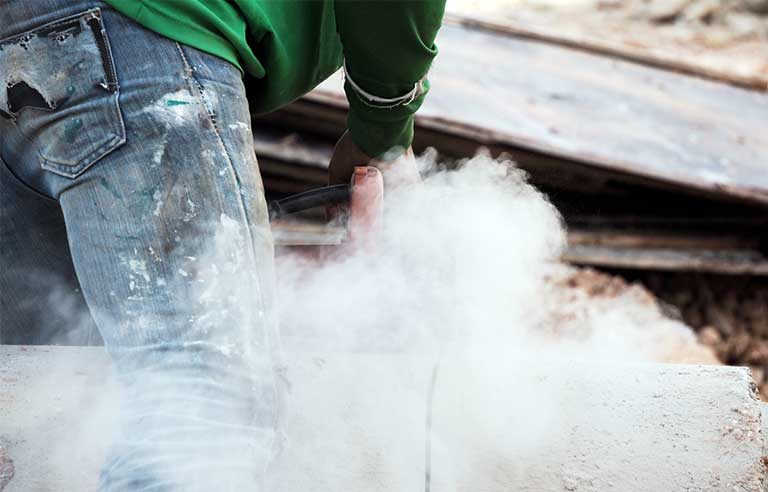OSHA drastically cut silica-based inspections in FY 2018, 2019: DOL OIG report

Washington – OSHA’s scaled-back enforcement efforts on silica exposure during a recent two-year period left more workers at risk, according to a Department of Labor Office of Inspector General audit report released Sept. 29.
DOL OIG reviewed silica inspection and violation data for fiscal years 2018 and 2019, conducted interviews with OSHA staff, and reviewed evidence for inspector training and documentation for the agency’s outreach and guidance program. Findings show that OSHA performed an average of 440 silica inspections during each of the two fiscal years after the enforcement date of the agency’s new silica rule – Sept. 23, 2017. The agency conducted more than 1,000 such inspections in each of the previous two fiscal years.
The report notes that OSHA canceled a National Emphasis Program on silica on Oct. 26, 2017. That NEP was renewed Feb. 4, 2020.
The agency states that 2.3 million workers nationwide are exposed to silica. When inhaled, tiny particles that stem from cutting, sawing, grinding, drilling and crushing stone, rock, concrete, brick, blocks and mortar increase the risk of serious silica-related diseases such as silicosis – an incurable lung disease. Workers exposed to silica also are at risk for kidney disease, lung cancer and chronic obstructive pulmonary disease.
Among its recommendations to OSHA, DOL OIG advises implementing a policy for future emphasis programs that “minimizes the lapse in enforcement.”
In a Sept. 16 response to a draft of the report, Jim Frederick, acting OSHA administrator, cautioned DOL OIG not to equate inspections with accomplishment.
| Sign up for Safety+Health's free monthly email newsletters and get the news that's important to you. |
“OSHA believes that not meeting an inspection goal does not equate to not prioritizing nor reducing hazards,” Frederick writes. “The number of inspections alone does not predict whether employers are controlling exposures to health hazards, including those related to silica.” Frederick also considers it inappropriate for DOL OIG to recommend or conclude how OSHA “chooses to prioritize its resources.”
He continues: “Prioritizing resources is within the discretion of the agency, department and administration in order to respond to the needs of workers and their commensurate risks of safety and health hazards. There are many competing priorities for the agency at any given time. For example, the current COVID-19 pandemic required the agency to reallocate resources throughout OSHA.”
Frederick said that he agrees with the recommendation to “establish meaningful goals and processes to assess whether OSHA’s outreach efforts are achieving the desired results.”
He adds: “OSHA agrees that establishing real and meaningful metrics for evaluating outreach conducted pursuant to issuance of new standards is important and would be a recommendation worthy of OSHA’s consideration.”
Post a comment to this article
Safety+Health welcomes comments that promote respectful dialogue. Please stay on topic. Comments that contain personal attacks, profanity or abusive language – or those aggressively promoting products or services – will be removed. We reserve the right to determine which comments violate our comment policy. (Anonymous comments are welcome; merely skip the “name” field in the comment box. An email address is required but will not be included with your comment.)

